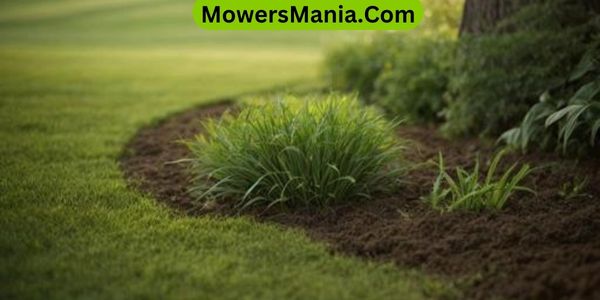Looking to give your lawn a natural boost? Discover the best natural fertilizer options for your lawn.
Learn about the benefits of organic fertilizers, different types available, and how to apply them effectively.

Keep your lawn healthy and thriving with these simple, environmentally-friendly solutions.
Benefits of Natural Fertilizers
Improving soil health is one of the key benefits of using natural fertilizers on your lawn. When you opt for natural fertilizers, you’re enriching the soil with essential nutrients and organic matter that promote the growth of beneficial microorganisms.
These microorganisms help break down organic material, making it easier for plants to absorb nutrients and water. By improving soil health, natural fertilizers create a sustainable environment for your lawn to thrive.
Another advantage of natural fertilizers is their ability to enhance the overall resilience of your lawn. They help develop stronger roots and thicker grass, making your lawn more resistant to pests, diseases, and environmental stressors.
This means fewer chemicals are needed to maintain the health and appearance of your lawn, reducing potential harm to the environment, pets, and family members.
Furthermore, natural fertilizers contribute to long-term soil fertility. They support the natural processes of the soil, ensuring that it remains fertile and productive for years to come.
Unlike synthetic fertilizers, natural options release nutrients slowly, preventing nutrient leaching and runoff. This sustainable approach benefits not only your lawn but also the surrounding ecosystem.
Types of Organic Lawn Fertilizers

Enhancing soil fertility through the use of natural fertilizers provides a strong foundation for discussing the types of organic lawn fertilizers available to you.
There are several types of organic lawn fertilizers that can help you maintain a lush and healthy lawn. One common type is compost, which is made from decomposed organic matter and provides essential nutrients to the soil.
Another type is manure, which is rich in nitrogen, phosphorus, and potassium, making it an excellent natural fertilizer for promoting healthy grass growth.
Additionally, seaweed-based fertilizers are rich in micronutrients and can help improve soil structure.
Fish emulsion is another popular organic fertilizer, offering a quick-release source of nutrients for your lawn.
Other options include bone meal, blood meal, and alfalfa meal, each with its own unique benefits for soil health and plant growth.
Understanding Nutrient Content
To understand the nutrient content of natural fertilizers, you need to be aware of the specific benefits they offer to your lawn’s soil and grass.
Different natural fertilizers contain varying levels of essential nutrients such as nitrogen, phosphorus, and potassium.
Nitrogen is crucial for promoting vibrant green grass growth, phosphorus supports strong root development, and potassium aids in overall plant health and disease resistance.
When choosing a natural fertilizer, it’s important to consider the nutrient ratios and how they align with your lawn’s specific needs.
For instance, if your soil lacks nitrogen, a fertilizer with a higher nitrogen content would be beneficial. Understanding the nutrient content of natural fertilizers allows you to address any deficiencies in your lawn’s soil and provide targeted nourishment for optimal growth.
Additionally, natural fertilizers often contain organic matter, which improves soil structure, enhances moisture retention, and encourages beneficial microbial activity.
This organic matter breaks down slowly, releasing nutrients gradually and promoting long-term soil health.
Application Methods for Natural Fertilizers

You can apply natural fertilizers by spreading them evenly across your lawn using a fertilizer spreader. This ensures that the fertilizer is distributed uniformly, allowing your grass to receive the nutrients it needs to thrive.
Another method is to apply the natural fertilizer by hand, which allows for more precision, especially around delicate areas such as flower beds or garden borders.
Additionally, you can use a hose-end sprayer to apply liquid natural fertilizers, making it easier to cover large areas quickly and efficiently.
- Simplify your lawn care routine with easy-to-use application methods.
- Enjoy the satisfaction of nurturing your lawn with your own hands.
- Achieve lush, green grass and vibrant, healthy plants with these application techniques.
Tips for Maintaining a Healthy Lawn
Maintaining a healthy lawn’s lushness and vibrancy requires consistent care and attention to key factors such as mowing, watering, and pest control.
Firstly, mowing your lawn at the right height is crucial. Set your mower blade at around 3 inches to promote deep root growth and shade out weeds.
It’s also important to water your lawn deeply and infrequently, typically about 1-1.5 inches of water per week, allowing the soil to dry out between watering to encourage strong root development.
Additionally, monitoring for pests and diseases is essential. Keep an eye out for signs of damage and treat any issues promptly to prevent them from spreading.
Aeration is another vital aspect of lawn maintenance. Aerating your lawn once a year helps to alleviate soil compaction and allows air, water, and nutrients to reach the grassroots.
Lastly, regular fertilization with natural products can provide essential nutrients for the soil and grass.

Frequently Asked Questions (FAQs)
Can Natural Fertilizers Attract Unwanted Pests to the Lawn?
Yes, natural fertilizers can attract unwanted pests to the lawn. To avoid this, consider using slow-release organic fertilizers and maintaining proper lawn care practices to minimize the risk of attracting pests.
Are There Any Specific Natural Fertilizers That Are Best for Drought-Prone Areas?
In drought-prone areas, it’s best to use natural fertilizers with high levels of potassium, such as compost or seaweed-based products. These help promote drought resistance and overall health for your lawn while minimizing water usage.
How Long Does It Typically Take to See Results When Using Natural Fertilizers on a Lawn?
When using natural fertilizers on your lawn, you can typically expect to see results within a few weeks. The time it takes for the fertilizer to take effect can vary based on factors like soil condition and weather.
Are There Any Potential Environmental Concerns Associated With Using Natural Fertilizers on a Lawn?
When using natural fertilizers on your lawn, potential environmental concerns to consider include nutrient runoff, which can lead to water pollution, and the impact on local wildlife. It’s important to use these fertilizers responsibly.
Can Natural Fertilizers Be Used in Combination With Synthetic Fertilizers for Improved Results?
Yes, natural fertilizers can be used in combination with synthetic fertilizers for improved results. They can enhance soil health and provide a balanced nutrient profile for your lawn. Consider a blend for optimal benefits.
Conclusion
So, when it comes to keeping your lawn healthy and vibrant, natural fertilizers are the way to go. They provide numerous benefits, come in various types, and are easy to apply.
By understanding their nutrient content and following proper application methods, you can ensure your lawn stays lush and green.
With these tips in mind, you’ll have a beautiful, thriving lawn in no time.



